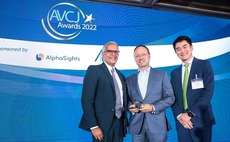
Asia buyouts: The case for control

Investors are looking to minimise external financial and macro risks and emphasise factors they can control – which means more buyouts, careful asset selection, and greater operational intensity
Asia private equity buyouts fell from an all-time high of USD 144.7bn in 2021 to USD 80.8bn in 2022, but amid the carnage, two points are worth noting. First, the buyout total is still the third largest on record. Second, for the first time in six years – and only the second time since the global financial crisis – more capital went into control deals than into growth equity, according to AVCJ Research.
Buyouts enjoyed a few years of pre-eminence from 2000 when turnarounds in the likes of Korea and Japan brought global GPs to the region in greater numbers. However, the emergence of China pre-IPO opportunities and then growth-stage technology deals flipped Asia on its head. Between 2005 and 2022, for every USD 1 deployed into buyouts, USD 1.25 went to growth equity.
In an investment environment characterised by unprecedented levels of uncertainty, large-cap pan-regional managers are looking to counterbalance external risks they cannot dictate by doubling down on areas where their influence holds firm. This means prioritising the ability to move swiftly and pursuing more control.
"If our team is not bringing to us control deals or assets where we can control our exit, I have no interest in having a conversation," Lincoln Pan, co-head of PE at PAG, told the AVCJ Private Equity & Venture Forum. "At this point, you don't know when capital markets will turn back, you don't know when sponsor debt will be available. That's the first focus we have as an organisation."
Other GPs expressed similar views. Buyouts account for 70% of investment activity at Affinity Equity Partners, but K.Y. Tang, the firm's chairman and managing partner, plans to focus solely on buyouts over the next two years. He highlighted the importance of tweaking management, noting that a different kind of team – one defined by resilience – is required when conditions become difficult.
X.D. Yang, Asia chairman at The Carlyle Group, placed it in the context of investors no longer being able to rely on macro tailwinds and instead having to drive growth through value-creation initiatives. This naturally lends itself to more control – "I think most funds in Asia are shifting towards more control buyouts," Yang said – and greater emphasis on sector specialisation and functional expertise.
Paradigm shift
There is an overriding sense that the conditions previously so conducive to buyouts, largely the result of accommodating monetary policy, have been consigned to the past. Rising interest rates have increased the cost of capital, while inflation is pressuring the bottom line. Moreover, Asia is struggling with currency depreciation, slowing economic growth, and rising geopolitical risk.
"Everything we have seen and believed in for the last two or three decades – increasing global trade, growth, stimulus with monetary authorities around the globe printing over USD 20trn in the last 10-15 years, a world at peace, strong consumer sentiment, inflation in a goldilocks phase of roughly 2% - is reversing," said Puneet Bhatia, an Asia managing partner and head of India at TPG Capital.
"Trying to reconcile this macro backdrop and staying focused on companies with all this uncertainty, the policy postures some countries have taken, the geopolitical tensions at play. Overcoming these unknowns and being constructive enough to invest, that's at the back of my mind."

Where private equity firms did pursue large buyouts last year, they played safe in more developed geographies and tangible, relatively asset-heavy, and regulated asset classes. Of the 12 largest transactions, excluding energy and utilities, Japan and Australia accounted for four apiece. Manufacturing, telecom, healthcare, and logistics featured prominently.
Affinity revised underwriting from a 25% IRR to 20% more than a decade ago. Tang noted that some global private equity firms now target 15% and he doesn't see that changing, even though rising interest rates make such returns look less attractive in relative terms.
"In the past, people justified high multiples because interest rates were low. Now interest rates are going up and [financing terms] are tightening," he added. "Previously, we would get 7x EBITDA for leverage, although we've never done more than 5x. Now we see 3-4x. Interest is 9%, up from 4%. You must pay a lower multiple or figure out how to do more value creation."
PAG starts by underwriting to a base case 12% IRR with 100% equity funding. From there, proposals must demonstrate a solid risk-case scenario with modest leverage and a minimum 12% return. Once comfortable with that, the investment committee will entertain higher risk-return outcomes.

Frank Tang, chairman and CEO of China-focused FountainVest Partners, echoed that his team has been exploring scenarios in which multiples contract on exit. In the past two years, companies with negative free cash flow – often growth-stage technology plays with high-cash-burn business models – have been dismissed out of hand. Tang expects no change in the coming two years.
Both FountainVest and Affinity have been conservative in their use of leverage, but they look for opportunities to refinance and return capital to LPs wherever possible. Affinity's Tang observed there is nothing wrong in starting with 3x leverage, proving the investment case and riding any post-pandemic business recovery, and then completing a recapitalisation when credit conditions improve.
Operational angle
Focusing on buyouts where they have greater control over the investment process and outcome and playing it safe on underwriting and leverage are both examples of risk mitigation. Australia-based Pacific Equity Partners (PEP) assesses performance in the context of three key risk factors: financial, exogenous, and operational.
With financial risk becoming more challenging because the cost of debt is rising and exogenous risk is clouded by macroeconomic uncertainty, PEP seeks to minimize its exposure in these areas while emphasising operational risk. As Shannon Wolfers, a managing director at the GP, put it: "What are the three or four things that are within our control that can double the size of the company?"
Much like PAG, the starting point of every conversation is zero-loss investing, or "building your business case and throwing rocks at it from every possible direction." PEP favours market leaders that are strong enough to pass on rising costs to end customers and what Wolfers describes as "good stable boring businesses" led by management teams capable of driving transformation.
INova Pharmaceuticals is held up as a case in point. The Australian prescription medicines business is no stranger to private equity ownership. Valeant Pharmaceuticals bought the company from two local GPs in 2011 for USD 528m before selling it to PEP and Carlyle at a USD 930m valuation in 2017.
For PEP, iNova was attractive because the industry has consistently generated annual revenue growth in the mid-single-digit range. On top of that, there was an opportunity to pursue a region-wide rollout and Carlyle, with its larger geographic footprint, was a logical partner in this effort.
Last October, TPG bought the company for an enterprise value of AUD 2bn (USD 1.3bn), facilitating exits for Carlyle and PEP. The latter secured a 2.4x return for its fifth fund and reinvested in the business through Fund VI, keen to continue riding the regional expansion story.
The strategy is in keeping with TPG's repositioning as an investor in companies that span multiple Asian geographies rather than relying heavily on just one. Ganen Sarvananthan, an Asia managing partner and co-head of Southeast Asia at the firm, noted that in the last two fund cycles, 30%-40% of the portfolio has cut across two, three or four markets. It is likely to be over half in the next fund.
The intellectual logic is rooted in a recognition that trade within Asia is three times that of the North American Free Trade Agreement (NAFTA) markets and last year exceeded that within the EU. In addition, native Asian brands are gaining traction region-wide, and the recalibration of supply chains is creating opportunities beyond China.
The approach is also defensive – it dilutes single-market risk, with China increasingly accessed indirectly – and plays into TPG's value creation capabilities. "We find interesting businesses in one market and expand them into others because we have a diversified pool of operational and investment talent," said Sarvananthan.
Not all pan-regional firms pursue this strategy with equal enthusiasm. PAG, for example, has resolved to focus on companies that exhibit domestic strength, with economies like China and India to the fore. "Anything cross-border at this stage is completely off the table," Pan said, adding that it would be impossible to underwrite a Chinese company highly dependent on overseas revenue.
PAG has complemented its deep coverage of China by building out an India team over four years and putting USD 900m to work. Australia is increasingly in the firm's crosshairs as well, with USD 800 deployed over three years. Even though the market is far smaller than China and India, domestic-focused companies are of most interest; Pan described Australia-to-China expansion deals as a farce.
Being different
FountainVest's Tang admitted that "If we don't have a special angle to add value, operationally or otherwise, it will be difficult for us to make a decision," highlighting the challenges of establishing whether entry valuations can translate into attractive returns. Regional expansion is one of several ways that private equity firms can build conviction around a thesis and differentiate themselves.
It is closely aligned with the development of domain expertise and a narrowing of sector coverage. FountainVest now restricts itself to consumer, healthcare, and industrial and business services, while more than two-thirds of TPG's Asia activity in recent fund cycles has been consumer and healthcare.
Heath Zarin, founder and CEO of EmergeVest, which concentrates on supply chain and technology-related investments, observed that when market dynamics are unpredictable, it is very important that GPs are clear on how they drive value creation. Specialisation can be a panacea in this context.
"Specialisation helps you originate proprietary deal flow, be proactive about creating opportunities, evaluate those opportunities in an informed way, and position yourself as a preferred buyer of businesses," Zarin said, adding that over 90% of EmergeVest's deals are proprietary.
A phenomenon of recent years has been the increased penetration of sector teams within pan-Asian managers. Functional expertise is increasingly layered on top of this as private equity firms accumulate in-house resources in areas such as recruitment and digitalisation.
Carlyle's Yang noted that, for the first time in years, competition for deals and upward pressure on valuations appear to be easing. But investors must still be mindful of not overpaying for assets, and domain expertise plays a key role in this process.
"If there are so few buyers, why are you the hero? Because you are paying the highest price. Are you comfortable with the sector? Can you underwrite better? Can you bring in a better management team? Those are the skillsets we are trying to focus on," said Yang.
For private equity firms figuring out how they can address the all-pervasive uncertainty and adapt to changing market conditions, the prospect of fewer rivals chasing the same deals is heartening.
Affinity's Tang believes this is already happening: where once GPs were expected to submit binding bids based on four weeks of due diligence and one meeting with management, now they can take several months assessing an opportunity and still extract preferential terms.
"Asian currencies have dropped by an average of 16% across our portfolio and multiple compression is slightly below 20%. You are talking about buying companies that are 30-40% cheaper than before. If you were happy with the valuation two years ago, why wouldn't you be happier today?" he said.
Wolfers of PEP is also bullish. Corporate divestments have accounted for the bulk of Australian private equity deal flow over the past decade, but in recent years the selling pressure has largely dried up. Indeed, most investors vying with PEP for assets were corporates. Now he expects carve-outs to return, allowing PE firms to eat into the 80% of Australian M&A that remains corporate-led.
It remains to be seen how quickly any spike in buyout activity might arrive, even if control opportunities are increasingly available. Affinity's Tang advised investors to be patient, suggesting that conditions will become more attractive.
"You don't have to hurry to do a deal, you can drag it out. I see it all the time now – people sign the term sheet then go back and reprice the deal. They might do it twice and valuation is down 20%, but they are still there," he said. "We don't need to rush. Don't do the cha-cha, do the slow tango."
Latest News
Asian GPs slow implementation of ESG policies - survey
Asia-based private equity firms are assigning more dedicated resources to environment, social, and governance (ESG) programmes, but policy changes have slowed in the past 12 months, in part due to concerns raised internally and by LPs, according to a...
Singapore fintech start-up LXA gets $10m seed round
New Enterprise Associates (NEA) has led a USD 10m seed round for Singapore’s LXA, a financial technology start-up launched by a former Asia senior executive at The Blackstone Group.
India's InCred announces $60m round, claims unicorn status
Indian non-bank lender InCred Financial Services said it has received INR 5bn (USD 60m) at a valuation of at least USD 1bn from unnamed investors including “a global private equity fund.”
Insight leads $50m round for Australia's Roller
Insight Partners has led a USD 50m round for Australia’s Roller, a venue management software provider specializing in family fun parks.








